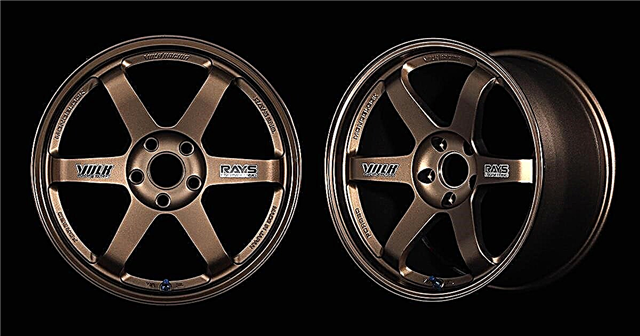Did you know that the production of some of our favorite foods is damaging our habitat?
When it comes to global warming, cars, power plants, and large offices come to mind as the main culprits of climate change. However, when biting off a hamburger or toasting a piece of salmon, no one thinks about the harm that these products cause to the environment.
Agriculture ranks first in the ranking for greenhouse gas emissions. According to the Food and Agriculture Organization of the United Nations, the level of greenhouse gas emitted by agriculture is increasing every year. Not all products from farming use the same amount of energy. Below is a list of the most harmful foods for our climate.
10. Almond milk
In the market for alternative dairy products, almond milk takes a leading position. However, despite all the benefits to human health, the production of this product causes enormous harm to the environment. 80% of the world's almonds are supplied by California, which is currently experiencing a terrible drought. Each tree needs about 5 liters of water, and 100 liters of water is needed to produce 100 ml of almond milk. Therefore, farmers need large amounts of water, which they try to extract by punching new wells, which in turn causes earthquakes.
9. Beef
Livestock accounts for about 14.5% of global greenhouse gas emissions, 65% of which are from beef and dairy cattle. The Natural Resources Defense Council estimates that for every kilogram of beef produced, 27 kg of carbon dioxide is emitted. If you add up the amount of beef consumed around the globe in a day, it turns out that there is a huge carbon footprint left in the atmosphere. In addition, cows produce methane, which is also a harmful greenhouse gas. In many countries, there is a trend towards deforestation to provide pasture for beef and dairy cattle. This situation has a negative impact on the global climate.
8. Lamb
Lamb is the same story as beef. For every kilogram of mutton produced, there are 22.9 kg of carbon dioxide emissions. Red meat production requires significant resources, as the animals require a large amount of feed (mainly corn or soybeans). The synthetic fertilizers and manure used in both crops release nitric oxide, which is considered 298 times more harmful to the environment than carbon dioxide.
7. Cheese
This product also emits carbon dioxide. First, cheese is made from cow's milk, and cows are known to emit methane. Secondly, the cheese requires refrigeration equipment and transport. The dairy market has only a small share of imported cheese, the rest is produced, which leads to huge emissions of carbon dioxide into the atmosphere. A multi-stage cheese production process requires significant energy costs. First, the processes of pasteurization, curdling and draining take place, then the most important stages begin: pressing, salting and, finally, ripening. In addition, the refrigeration equipment and transportation involved in the production of cheese emit harmful substances into the atmosphere.
6.Rice
Rice fields are the largest source of methane on Earth. Rice is the second most popular and demanded product in the world, and its production leads to global warming due to the large volumes of methane emitted into the atmosphere. Microorganisms that produce carbon monoxide also produce methane in rice paddies. Higher levels of carbon dioxide contribute to higher rice yields, but increase methane emissions into the atmosphere. Consequently, the amount of methane per kilogram of rice will increase, which will lead to an increase in temperatures in the rice paddies. Rice demand is growing as fast as the world's population grows, which means that methane emissions from rice paddies will only increase over time.
5. White bread
Everyone knows that grain bread is much healthier than white bread. The production of white bread is energy-intensive, as it requires the processing of wheat into pure flour in several sequential processes. These processes consume a huge amount of energy, which is bad for the planet. Also, environmentalists are concerned about the problem of recycling plastic packaging, which is sometimes packed with white bread.
4 eggs
The production of one egg produces 4.8 kg of carbon dioxide. Most of the emissions come from the production of chicken feed, energy consumed by farms and egg preparation, and poultry manure which releases nitric oxide. In addition, the growing number of chicken coops increases the amount of ammonia emitted by bird droppings.
3. Tuna
For many years, commercial catching of tuna around the world has been and remains a big problem. Fishing and the consumption of endangered tuna species only accelerate the complete extinction of this species. Fishing methods used by large fishing companies lead to a decrease in the number of tuna, as well as the death of other marine life, which will be caught in the nets of the fishermen.
2. Salmon
Everyone knows that salmon is rich in Omega 3 fatty acids, which is why doctors often recommend it for consumption. However, salmon farms are the most environmentally damaging aquaculture system. Such enterprises often place cages with broods right in the open sea, therefore, various additives and diseases caused by parasites are dumped directly into the sea waters, which leads to the extinction of marine life.In addition, due to the high amount of protein that salmon requires, many species of wild fish are endangered.
1. Chicken
Eating chicken is not bringing anything good to the world. In the United States, poultry farms are the leading cause of environmental degradation. First, 10 billion birds are slaughtered on farms in the United States every year, affecting soil conditions. Thousands of birds are kept in a small area, which leads to the rapid spread of various infections among the birds.
We recommend watching:
When we eat delicious food, we rarely think that its production has a detrimental effect on nature. From our ranking you will learn about the ten most harmful products for the environment. Learn more about cows and their role in the greenhouse effect.



